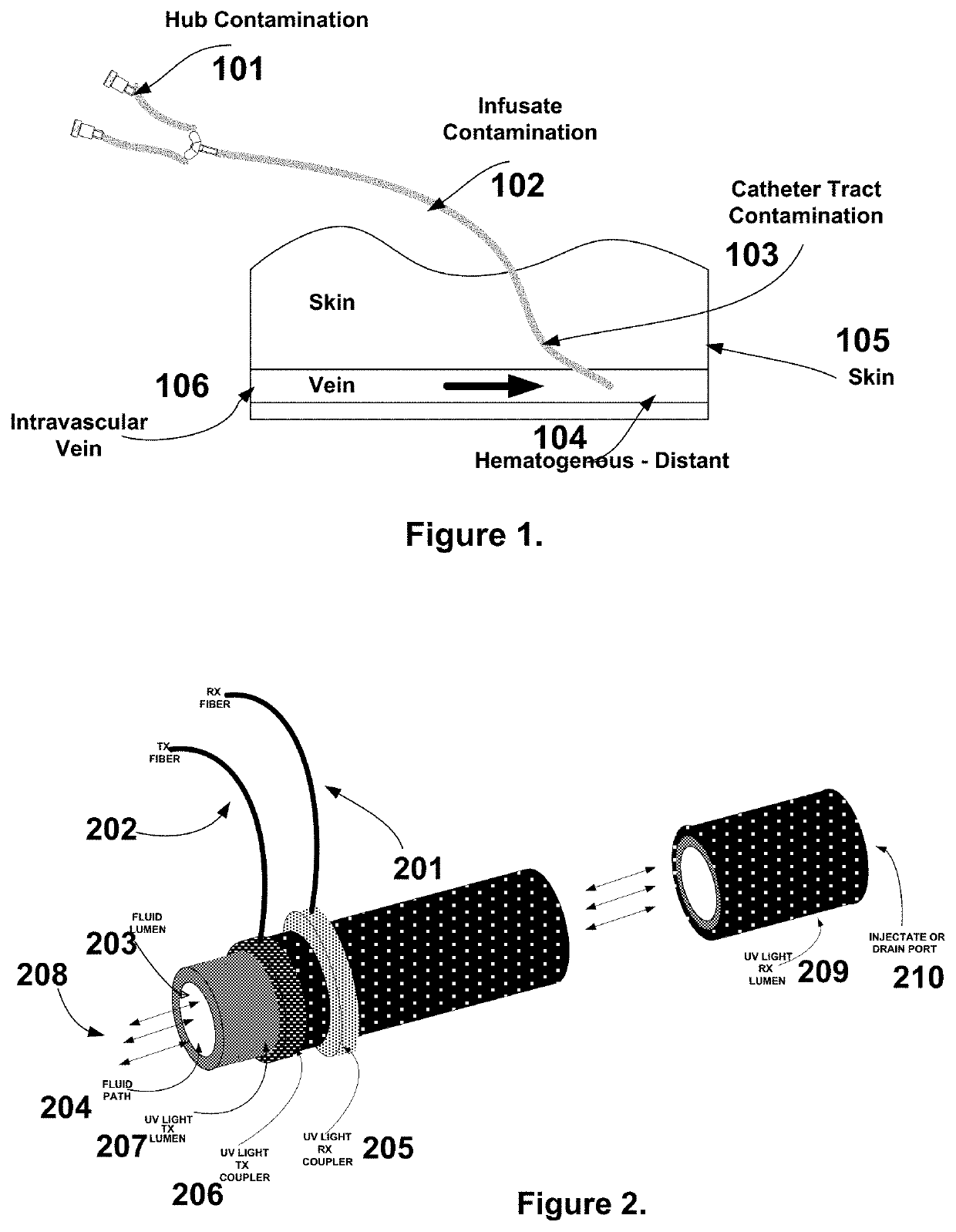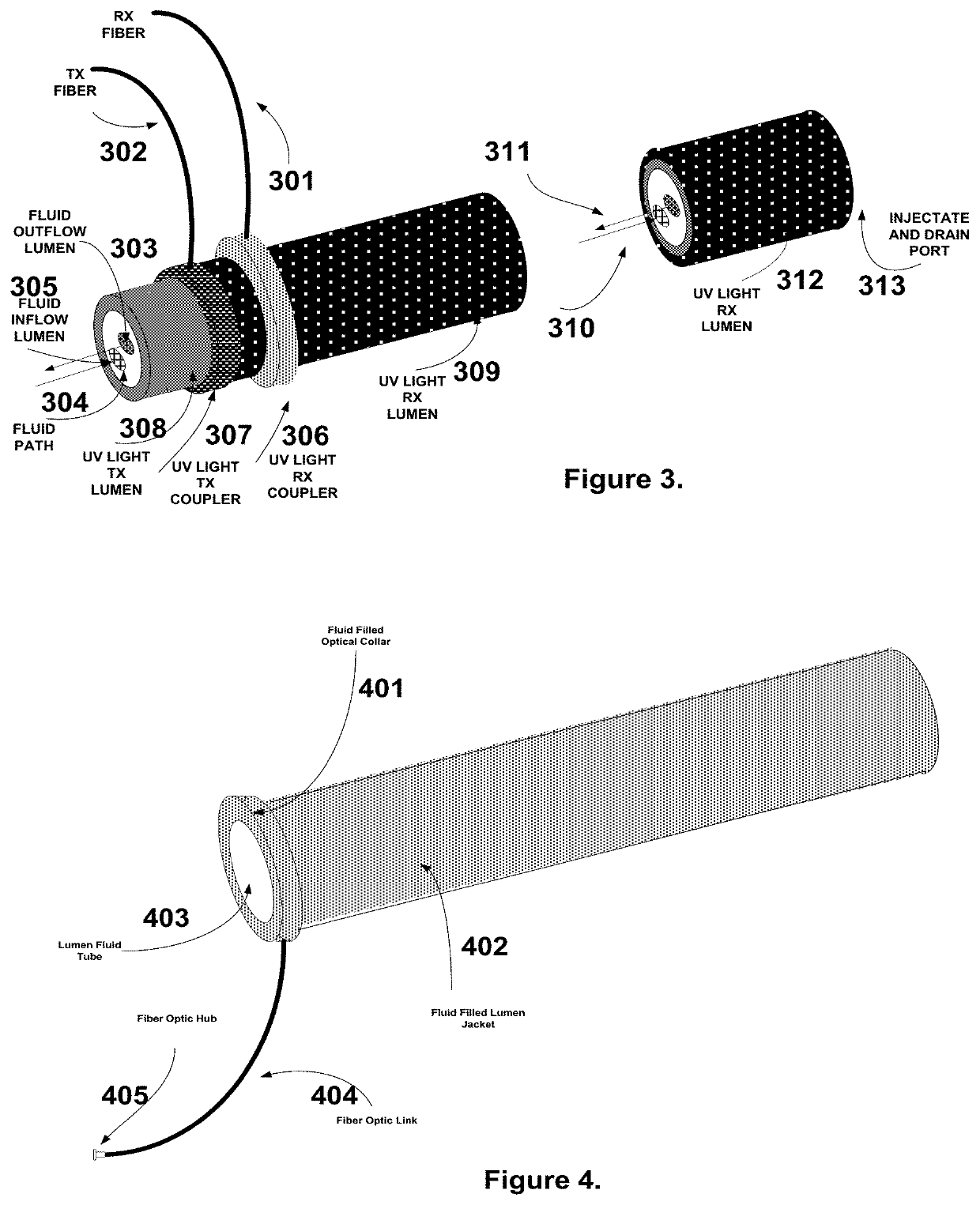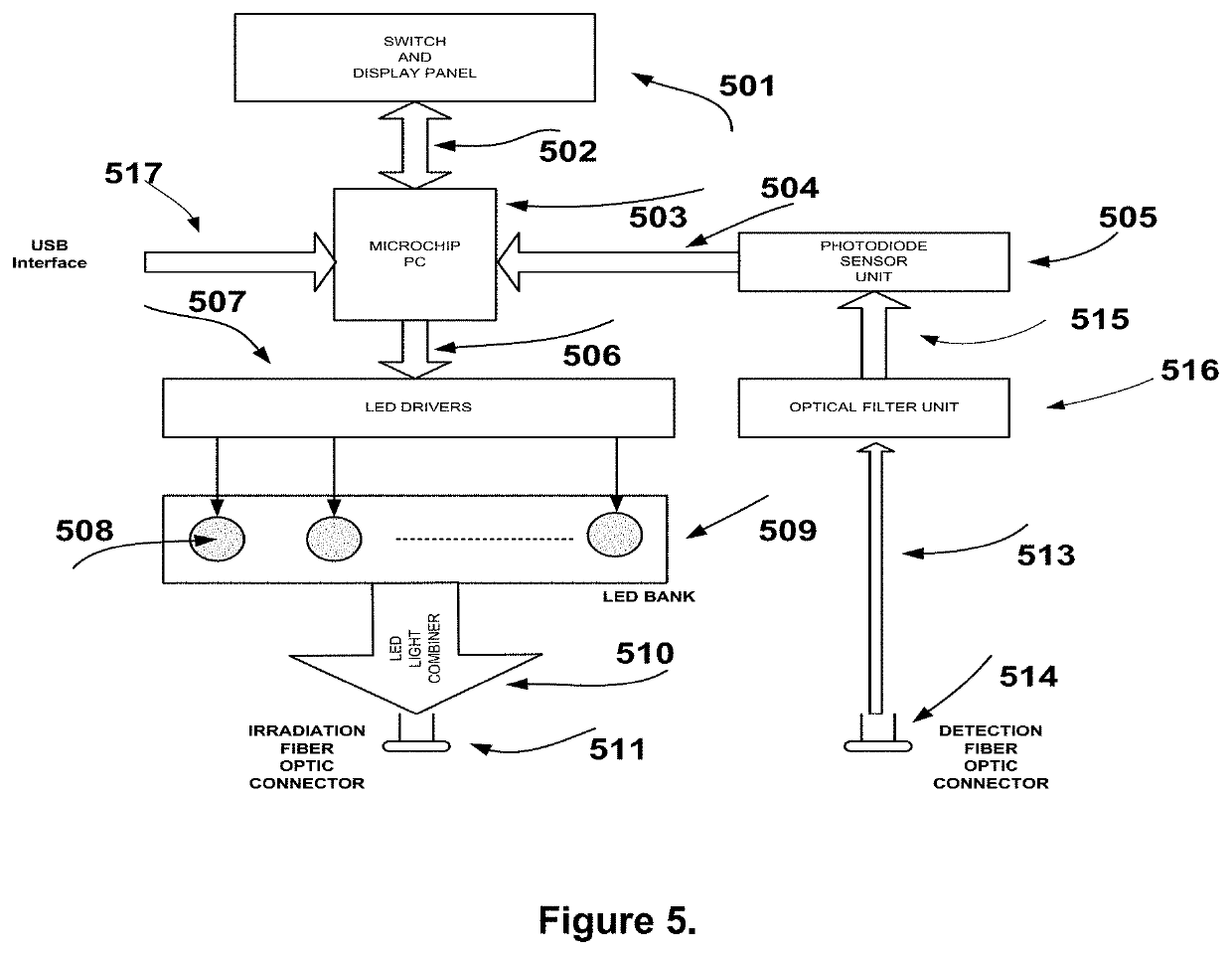Infection resistant catheter system
a catheter and infection-resistant technology, applied in the direction of water installations, disassembly, etc., can solve the problems of inability to provide a system that eliminates the bacteria and virus associated with the catheter device, the use of the catheter is the occurrence of catheter-related infections, and the inability to manage critically ill patients without intravascular access, etc., to achieve the effect of improving the prevention of catheter-related infections
- Summary
- Abstract
- Description
- Claims
- Application Information
AI Technical Summary
Benefits of technology
Problems solved by technology
Method used
Image
Examples
Embodiment Construction
[0037]There are four distinct pathways that lead to catheter-related infection (FIG. 1.0).[0038]1. First, colonization of the outer surface may start by the migration of skin resident microorganisms from the insertion site, and microbial cells may progressively move through the transcutaneous part of the dermal tunnel surrounding the catheter 103.[0039]2. Second, colonization of the internal surface may occur by colonization of the hub and intraluminal surface of the catheter during utilization, and frequent opening of the hub is now viewed as an important source of microbial colonization 101.[0040]3. Hematogenous seeding of the catheter during bloodstream infection of any origin represents a third pathway 104, and[0041]4. Fourth, contamination of the fluids or drugs intravenously administered is sometimes responsible for outbreaks 102.
[0042]The apparatus described in this enclosure is resistant to all four contamination sources. It uses UVC light to damage the genetic material in t...
PUM
| Property | Measurement | Unit |
|---|---|---|
| length | aaaaa | aaaaa |
| wavelengths | aaaaa | aaaaa |
| flexible | aaaaa | aaaaa |
Abstract
Description
Claims
Application Information
 Login to View More
Login to View More - R&D
- Intellectual Property
- Life Sciences
- Materials
- Tech Scout
- Unparalleled Data Quality
- Higher Quality Content
- 60% Fewer Hallucinations
Browse by: Latest US Patents, China's latest patents, Technical Efficacy Thesaurus, Application Domain, Technology Topic, Popular Technical Reports.
© 2025 PatSnap. All rights reserved.Legal|Privacy policy|Modern Slavery Act Transparency Statement|Sitemap|About US| Contact US: help@patsnap.com



